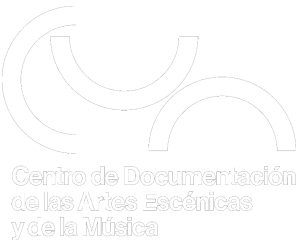- London contemporary dance theatre
London contemporary dance theatre 1967- (Nombre corporativo)
VIAF London Contemporary Dance Theatre (LCDT) grew from the Contemporary Dance Group created in 1967 by the philanthropist and soon-to-be founder of The Place, Robin Howard. The Group also performed under the title London Contemporary Dance Company but most often toured as a performance unit to small venues in Britain under its original name of London Contemporary Dance Group. When Howard installed London Contemporary Dance School (LCDS) and the performance company at The Place in Duke’s Road in 1969, LCDT was born and began to build its reputation as an internationally celebrated contemporary dance company. From its inception, the group and later the company was under the artistic direction of Robert Cohan. Although the training and overall style of the dancers he nurtured was based on Martha Graham’s work, the company developed its own brand of poetic lyricism offset by dramatic intensity. The backbone of the repertory was provided by Cohan and included several works which continue to be performed by leading national and international dance companies. Stabat Mater (1976) was revived, for example, by Rambert Dance Company in 1995, and Forest (1977) by Phoenix Dance Company in 2005. Waterless Method of Swimming Instruction (1974) is one of the dances by Cohan available on video. Class (1975) is remembered as a work that showcased the dancers’ technical virtuosity and Nympheas (1976) for its references to Monet’s paintings. Over the years, LCDT revived works from the modern dance canon such as Alvin Ailey’s Hermit Songs (in 1969), Graham’s Diversion of Angels (performed 1974), Paul Taylor’s Three Epitaphs (in 1970) and his Espanade (performed 1982), and Jerome Robbins’ Moves (in 1986). But the company also performed post-modern work by choreographers who were relatively unknown in Britain at the time. These included Rosalind Newman’s John Somebody (1987), Amada Miller’s My Father’s Vertigo (1992) and Angelin Preljocaj’s Sand Skin (1993). From the beginning, Cohan and Howard encouraged home-grown talent and choreographers such as Richard Alston, Micha Bergese, Siobhan Davies, Robert North, Darshan Singh Bhuller, Anthony van Laast and Jonathan Lunn all emerged from London Contemporary Dance Theatre. Alston was an artistic rebel who followed Cunningham at a time when Graham’s style was at the heart of the school’s and company’s aesthetic. Recognised immediately as a major talent, some of his earliest dances such as Nowhere Slowly (1971) and Tiger Balm (1972) went from the school workshops into the LCDT repertory. Davies’ Sphinx (1977) was a breakthrough work in which the Graham head-to-tail connection was treated with a greater sense of flow. This discovery helped to fuel Davies’ later movement explorations and she has gone on to become of Britain’s most important choreographers. Several other performer/choreographers who began their careers with the company have since achieved artistic and educational eminence. Ross McKim and Christopher Bannerman currently hold strategic posts in major university and conservatoire organisations. Outstanding performers produced within LCDT include Kenneth Tharp, now Chief Executive of The Place; Lauren Potter, Artistic Director of LCDS’ postgraduate performance company, EDge from 2007 - 2010 and Anne Went, who is currently Director of Programs Dance at Middlesex University. Robert Cohan retired as full-time artistic director of LCDT in 1983 after the company’s successful first appearance in New York at the Brooklyn Academy of Music. He remained with LCDT on a half-yearly basis but the issue of artistic directorship was difficult to resolve. Both Dan Wagoner (American dancer/choreographer) and Nancy Duncan (producer and associated with the Doug Varone Company) undertook the artistic directorship of LCDT. British candidates for the role (such as Siobhan Davies) preferred to remain at the helm of their own independent ventures and eventually it was decided to disband LCDT as a repertory company and form Richard Alston Dance Company at The Place in 1994. Throughout its 25-year existence, LCDT achieved significantly in both the artistic and educational fields. Pioneering the notion of the residency from 1975, Cohan and his dancers gave open classes and rehearsals in schools, colleges and community centres helping to foster Britain’s awareness of, and interest in contemporary dance as well as offering an insight into dance training and choreographic processes. The many music and design collaborations that Cohan spearheaded set a precedent in Britain for creative partnerships in a theatrical context. LCDT as developed by Howard and Cohan was seminal in helping to sow the seeds for the rich diversity of contemporary dance which Britain enjoys today. https://viaf.org/viaf/search?query=local.corporateNames+all+%22London%20contemporary%20dance%20theatre%22&sortKeys=holdingscount&recordSchema=BriefVIAF


